Getting Started
Fennel is a large, attractive plant with soft feathery leaves and tall stems topped with flat clusters of tiny, yellow, pollinator-friendly flowers in summer. The leaves, flowers and seeds have an aniseed flavour and aroma and can be infused to make tea, added to salads or used in cooking.

Herb fennel or common fennel (Foeniculum vulgare) is closely related to the vegetable Florence fennel or bulb fennel(F. vulgare var. azoricum), and is similar in appearance to dill, a distant relative, but is much taller, more vigorous and longer-lived. Also sometimes called wild fennel, it is to Great Britain and Ireland. Fennel forms a clump of stems up to 2m (6½ft) tall that die back in autumn and resprout from the base each spring.
Fennel is easy to grow, hardy and drought tolerant, and needs virtually no maintenance once established. It likes free-draining soil and full sun. It self-seeds very readily, so you may need to weed out any unwanted plants or move young to wherever you want them to grow.
As well as being edible and aromatic, fennel looks great in many settings, from formal herb gardens to flower borders and gravel gardens, and it mingles particularly well with ornamental grasses. The flowers attract pollinating insects and make beautiful additions to floral arrangements.
Month by Month
Sow
Plant
Harvest
Choosing What To Grow

There are two forms of fennel that are widely available – green-leaved common fennel (Foeniculum vulgare) and the bronze-leaved variety F. vulgare ‘Purpureum’. They are both grown in the same way, though bronze fennel is slightly hardier, and are equally as tasty and aromatic. They both self-seed readily, and the are true to type, so once you have one plant, you won’t usually need to buy more.
You can see many herbs, including fennel, growing in the herb plots at all the RHS gardens, so do visit to see how they’re grown and pick up useful tips.
What and where to buy
Fennel seeds are widely available in garden centres and online from gardening retailers and herb nurseries. You can also buy young plants in spring and summer from the same sources. When buying, make sure you choose herb fennel, rather than the vegetable Florence fennel, as both are often sold simply as fennel.
Fennel is very easy to propagate, so you may not need to buy seeds/plants at all – if any of your gardening friends already have a fennel plant, you could ask them for seeds in late summer, or for any unwanted self-sown in spring.
Recommended Varieties

Common fennel
Foeniculum vulgare – green feathery leaves, yellow flowers, and seeds, all with an aniseed flavour.

Bronze fennel
Foeniculum vulgare 'Purpureum' – attractive bronze feathery leaves. Good for all culinary uses.
Sowing
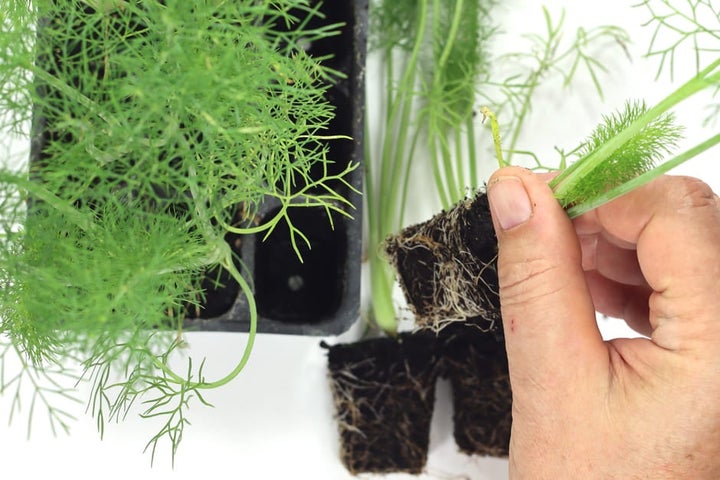
Fennel is best sown straight into its final growing site in mid- to late spring, but can also be sown indoors.
To start fennel off indoors, sow in spring into a modular tray filled with peat-free . Sow one seed per module, about 1cm (½in) deep. Once appear, keep them in good light and water regularly.
Sow fennel seeds outdoors from mid-spring, into their final growing site, either in the ground or in a large container filled with peat-free multi-purpose . Fennel likes a warm, sunny, sheltered location and light, free-draining soil. Sow the seeds about 1cm (½in) deep, then thin out the seedlings as they grow, until young plants are at least 30cm (1ft) apart – you can use the thinnings in salads. Protect fennel seedlings from slugs and snails.
Planting
You can plant shop-bought fennel plants outside in late spring and early summer. Young fennel plants grown from seed indoors should be moved outside while still very young, before their tap root forms – harden them off first, to acclimatise them to outdoor conditions.
Water the plants before moving them, then gently lift them out of their pot or module and plant straight into the ground without disturbing the roots. Position them at the same level they were previously growing and space them at least 30cm (1ft) from other plants, then water in well. Protect young fennel plants fromslugs and snails.
You can also plant fennel in a large container, at least 30cm (1ft) wide and deep, filled with peat-free multi-purpose . Choose a heavy, stable pot and position it in a sheltered location, as fennel grows into a tall plant that could easily get blown over.
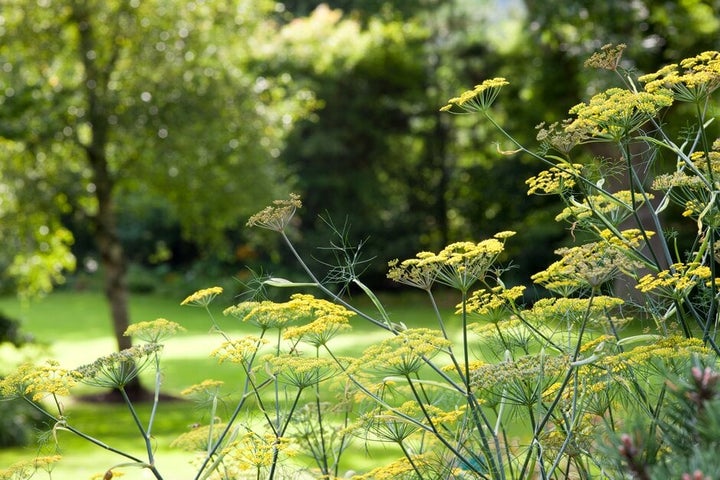
Plant Care
Fennel is very easy to grow and requires little maintenance, apart from removing the old stems before the new ones sprout in spring. It needs no feeding, and once established it is drought-tolerant so needs no watering either, unless growing in a container. In windy locations, fennel’s tall flower stems may need supporting with a .
Watering
Water young and newly-planted fennel plants regularly during dry spells in their first to ensure good root establishment. Fennel growing in containers will need a steady supply of moisture throughout the growing season. Check plants every few days and water as needed, aiming to keep the just moist.
Try to water early in the morning or in the evening to limit moisture loss from the soil, ideally using stored rainwater.
Cutting back
Fennel seeds ripen from late summer onwards, ready for harvesting if you wish. If you don't, they can be left in situ to provide a valuable food source for birds and other small garden creatures. Seeds that fall will, however, germinate readily, so some if you have an abundance of flowers and look out for self-sown in spring.
If you only want fennel for its leaves, you may prefer to cut off the developing flower stems as they appear, so the plant puts its energy into producing new leafy growth. Alternatively, you can trim back the whole plant to about 30cm (1ft) tall several times during the growing season, to encourage a regular supply of fresh young foliage for harvesting.
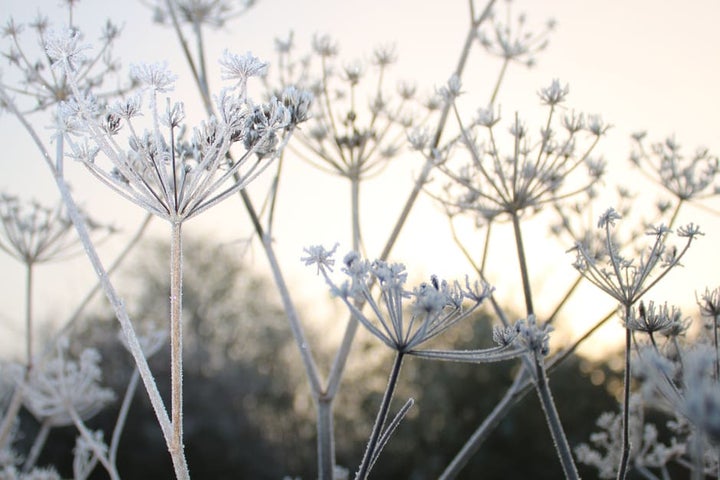
Fennel naturally dies back in autumn, with the stems turning brown and dried in appearance. They make an attractive architectural feature if left standing through the winter and provide a valuable overwintering site for insects. Just make sure to cut back the dead stems to ground level before new shoots appear in spring, so you don't damage them.
Propagating
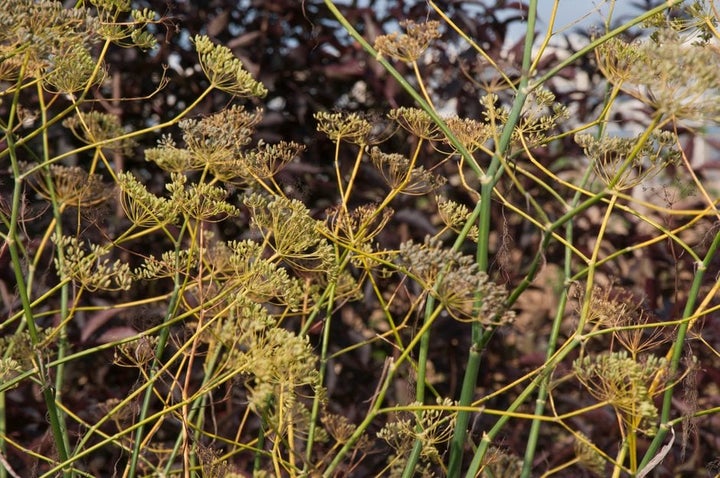
To make more fennel plants either collect the seeds once ripe and dry in late summer, for sowing in spring (see Sowing, above), or let the seeds scatter and produce naturally. You can move very young seedlings if they’re not growing where you want them to, but do your best not to disturb the roots (see Planting, above) – established seedlings with long tap roots may not survive being .
Harvesting
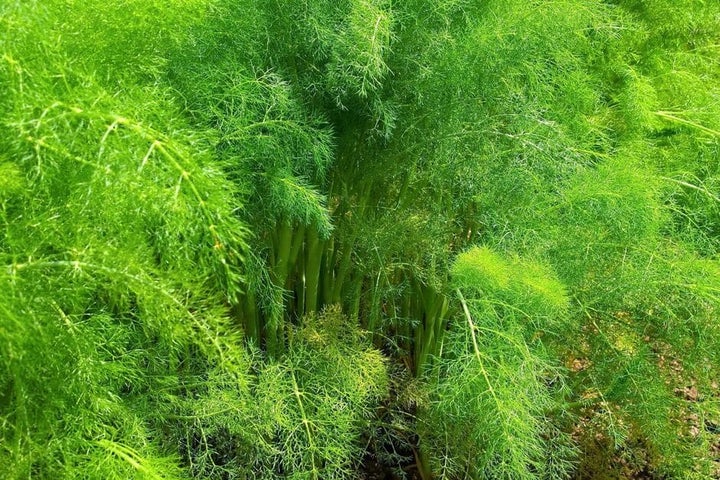
Fennel leaves, flowers and seeds are all edible and have a warm, aniseed flavour. They can be infused to make tea, added to salads or used in cooking. Harvest sprigs of young leaves as required from early summer to autumn.
The seeds can be used fresh over the summer months or dried for later use. To dry the seeds, cut whole seedheads in late summer when they ripen, place in a paper bag until the seeds dry out and fall, then store the seeds in an air-tight container.
Problem Solving
Fennel is usually vigorous and healthy, when given plenty of sun, warmth and free-draining soil, but in sites the roots may rot. Fennel is drought tolerant, so is generally unaffected by dry conditions. Where it grows happily, fennel will readily self-seed and can become a nuisance in some areas. Site it carefully and or weed out self-sown promptly if not wanted.
Slugs and snails may eat young seedlings, so put deterrents in place. They may also eat the new shoots of , but fennel is so vigorous that this isn’t a problem. Aphids may also colonise the fresh foliage in spring, but they do no significant damage. See Common problems, below, for more tips.
Common Problems

Slugs and snails
Slugs and snails are common garden animals, and they are well suited to the damp, mild climate of the UK. A few species feed on garden plants, but mos...



